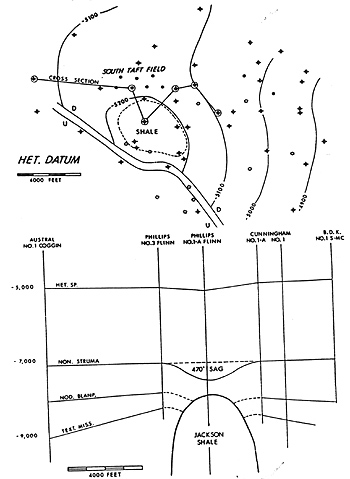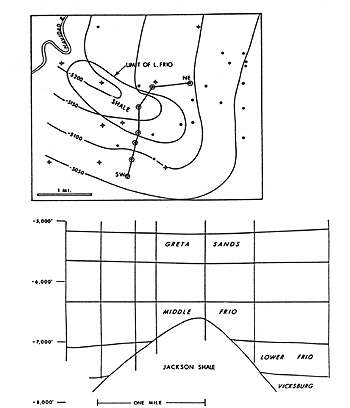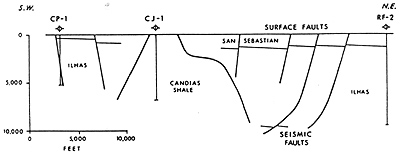Shrinkage of Shale Cores in Shale Domes
| Introduction | The most universal characteristic of shale domes, as
contrasted to salt domes, is that the shale cores lose
water, and thus shrink after emplacement. The shrinkage
results in local sags in the overlying beds and, in some
basins, in downward-towards-the-shale tilting of adjacent
beds. |
|
| Shale domes showing shrinkage | None of the Texas domes exhibit indisputable
down-toward-the-core tilting of adjacent beds; however,
seismic cross sections indicate that such tilts are
common around the shale domes in the Frontera region of
southern Mexico. The shale domes in the Caspian Sea
reportedly exhibit crestal sags and high pressures in the
cores and in the peripheral low permeability sheaths but
rarely exhibit down-toward-the-core tilting in adjacent
beds. Shrinkage of the shale cores may result in a system
of ring faults dipping into the shale. This has been well
established in the Reconcavo Basin. A shale dome in the
far offshore of the Eugene Island area of Lousiana also
exhibits this type of faulting. |
|
| Crestal sag example one | South Taft dome area of San Patricio County, Texas,
displays the effects of shale shrinkage on the overlying
section of sediments. A structure map and cross section
are shown below.
|
|
| Crestal sag example two | The map and cross section below are of the North
Laward shale dome, Jackson County, Texas. The map is a
structure contour map on the Greta (Frio) Sand. Shrinkage
of the shale diapir under the dome caused deformation in
the overlying section.
|
|
| Ring faults example | The Carijo diapir of the Reconcavo basin, Brazil, is
flanked by ring faults dipping into the diapir that
resulted from shrinkage of the shale mass. The cross
section below shows these faults.
|
|
| Traps
Associated with Shale Domes |



